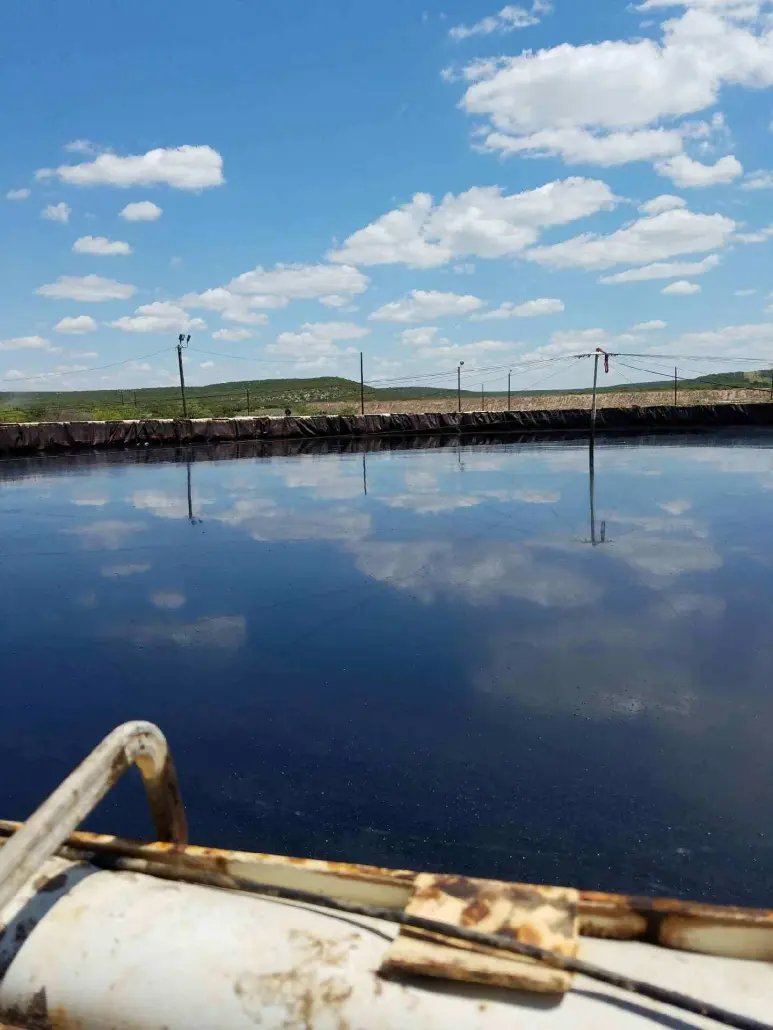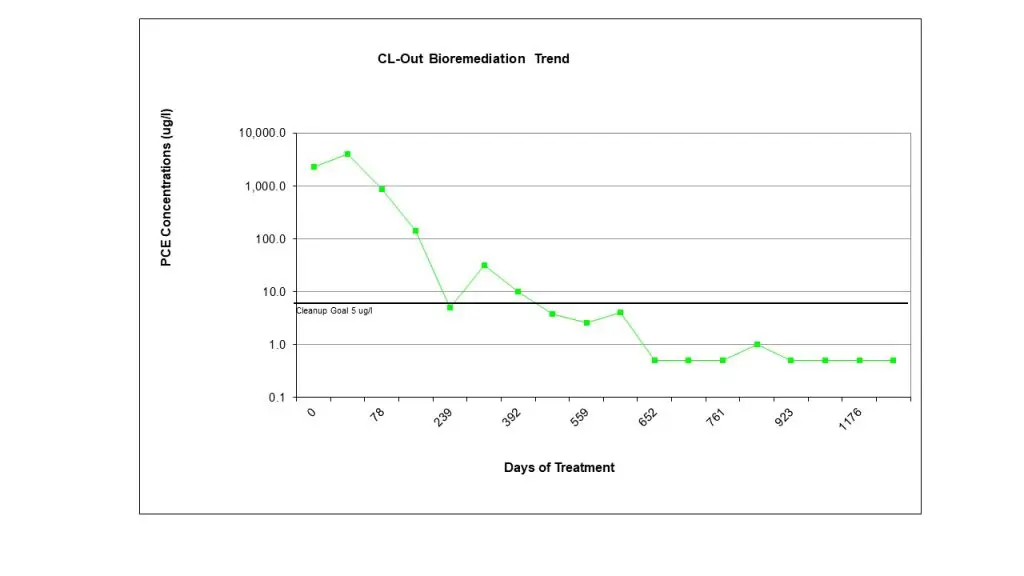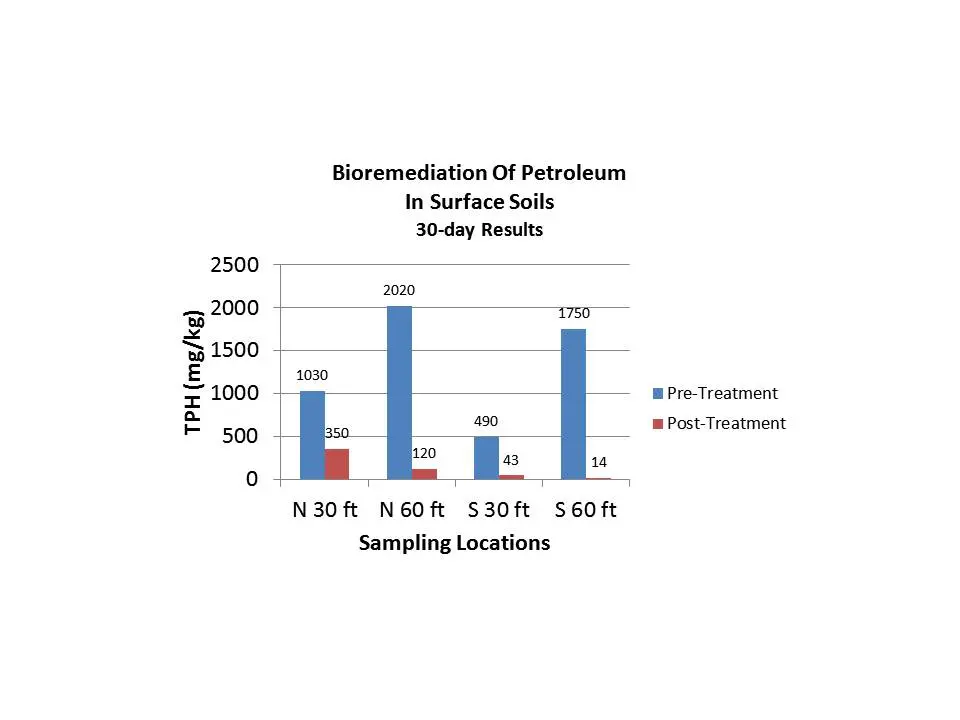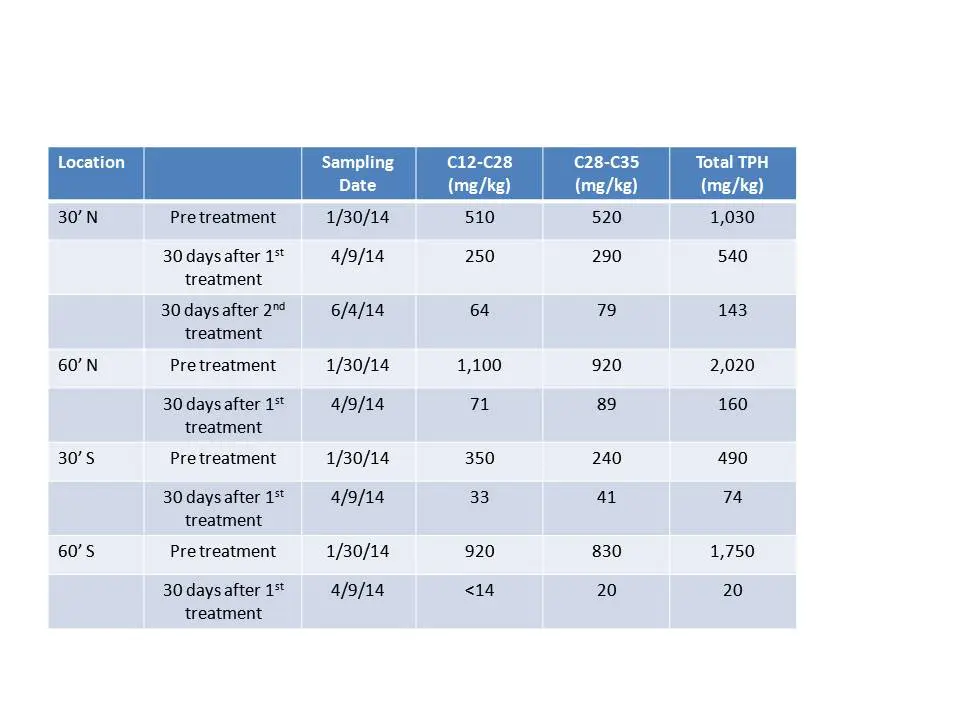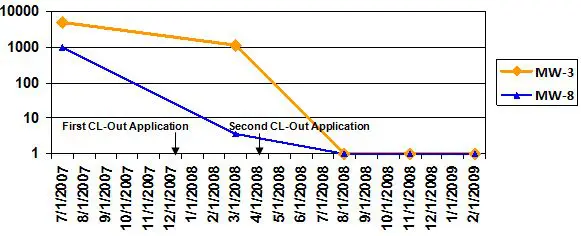Oil-Contaminated Water Treatment
Sustainable Bioremediation of Industrial Wastewater
CL Solutions provides a special consortium of microbes for oil-contaminated water treatment. Under various conditions, the oil removal rate was as much as 1,300 mg/L/day. In some situations the remediation goal is simply to remove the visible sheen or separate-phase oil. With aeration, CL Solutions microbes were able to remove the visible oil layer and reduce the TPH concentration from 29% to less than 1% in 30 days at a waste oil lagoon. For more information and other case studies click here.
Oil-Water Separator Discharge Improvement
Similar to waste water treatment in lagoons, Petrox is used to improve the performance of industrial and commercial oil-water separators by degrading dissolved-phase oil. The treatment goal is to reduce the TPH concentration to below discharge limits to avoid fines, surcharges and potential discontinuation of service. The Petrox organisms may be introduced into the collection and treatment system at any point, but are usually added to the collection or equalization sump for longer contact time. In most cases, the dissolved phase total petroleum hydrocarbons (TPH) is reduced by 50% to 90% in a manner of days.
For example, at a large city municipal Petrox reduced the TPH discharge from 25.9 to 7.40 mg/L in three days. At smaller retail oil-change centers the reduction was from 278 mg/L TPH to 14.1 mg/L TPH in 21 days. The biological treatment is maintained by adding a gallon of Petrox to the sump weekly.
The cost for maintaining discharge compliance at these applications is as little as $250 per month.

